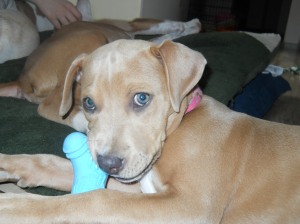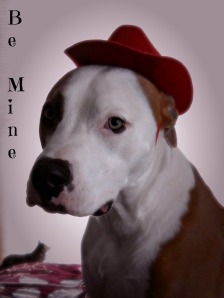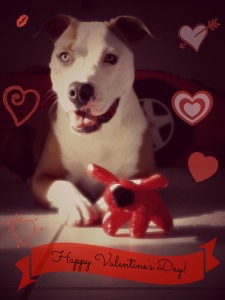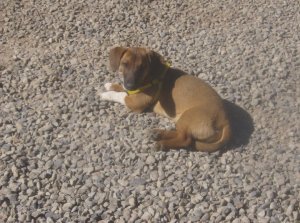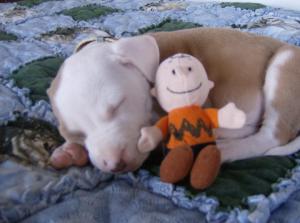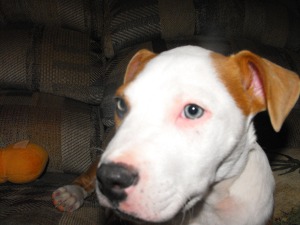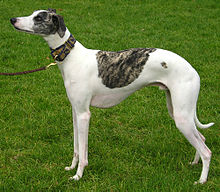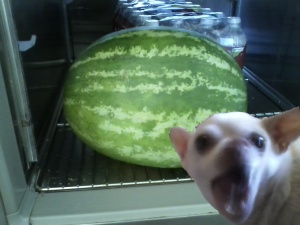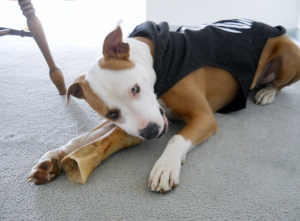 Many dogs have their own bad habits, and some of which can easily be broken. A common problem with dogs is the fact they love to chew. This is a normal behavior for dogs; they have been chewing bones and sticks since they were created in the wild. Some dogs chew more than others, and some can chew for hours on end. As long as your dog is chewing something that is meant to be chewed, let him chew it! Chewing helps clean a dog’s teeth, which keeps their mouths clean and free of dental diseases. On the other hand, if your dog is chewing everything in sight, like shoes, pillows, furniture, and so on… here are some tips to help break your dog’s naughty habits of chewing your stuff.
Many dogs have their own bad habits, and some of which can easily be broken. A common problem with dogs is the fact they love to chew. This is a normal behavior for dogs; they have been chewing bones and sticks since they were created in the wild. Some dogs chew more than others, and some can chew for hours on end. As long as your dog is chewing something that is meant to be chewed, let him chew it! Chewing helps clean a dog’s teeth, which keeps their mouths clean and free of dental diseases. On the other hand, if your dog is chewing everything in sight, like shoes, pillows, furniture, and so on… here are some tips to help break your dog’s naughty habits of chewing your stuff.
For puppies, keep the things your puppy might chew out of his or her reach. Put all shoes in a closet and keep the closet shut. Give your pup a selection of toys that (s)he can chew, and you can even toss a few into the freezer for a couple of hours. The cold chew toys are usually a favorite for puppies because it nubs their teething gums and relieves the pain of new teeth coming through. Make sure you teach your puppy what things (s)he can and can not chew at a young age. Most puppies grow out of chewing once their adult teeth have settled in, but in some cases, they will chew for their entire lives.
Jasper chewing his bone.
Once a dog is a year old or older, he/she should be well out of their chewing phase. For the adult chewer, here are some reasons why he chews, and how you can prevent it.
Many dogs who chew as adults chew out of anxiety or boredom. When a dog is alone, he will look for something to keep himself occupied while his owner is gone or simply not giving the dog 100% of their attention 24/7 (which no owner can). If your dog chews his own toys, that’s good. It might aggravate you, because he keeps destroying everything you buy him, but if you hadn’t given him toys, he could have chewed something valuable… your stuff! Providing your dog with strong toys and bones can save your stuff and keep your dog happy.
On the other hand, some dogs will not chew their own belongings, but rather they prefer yours! To the dog, chewing his owner’s things is more appealing and calms his anxiety because of one major factor: it smells of his human! Your scent is familiar to your dog, therefore making him feel less lonesome when you’re gone. Some people might think, “Oh, I’ll just give him my old shoes (or anything you don’t need anymore) so it will keep him busy and save the rest of my stuff.” Truth is, this is actually a very bad idea, and will lead to even more chewing problems. Your dog will not know you are giving him something old that you don’t need anymore, he will think, “Oh! Look! My person just gave me something that is theirs! That must mean I can chew it! Yay! Oh, look! Another thing that belongs to my person! Well, (s)he gave me this to chew, so I don’t think (s)he’d mind if I played with this! Or this!” Your dog will think that since you gave him an old shoe (or whatever you decided to give him), that it is ok to chew all the other shoes. Never allow your dog to chew something that is yours. It will lead him to chewing your new stuff, too. Dogs don’t care if something is new or old, if you let them chew something of yours once, they will try to chew it over and over again.
Then there are the dogs who like to chew one and only one thing. This could be anything, but it is the one thing your dog chews. He might do this simply because he likes the texture, size, and smell of that object, and he will return to it because it is his favorite thing in the world. If you don’t do anything about it the first time he chews it, he will always return because his smell will be left behind, and it will turn into his possession. In this case, the only thing to do is use a dog repellant or some type of action-reaction situation. For example, fill a soda can with noisy coins, or fill a bag with noisy cans, and place it above the object where your dog can’t see it. Tie a string to it, then tie the other end to the object your dog is trying to take. When your dog takes the item, the stuff will come crashing to the ground. This could scare your dog a bit, and make him not want to go near that object ever again.
For all chewers, the best thing you can do is provide them with a selection of toys. Kong toys and Buster cubes are some of the strongest toys for dogs, so you might look into those. If you catch your dog chewing your stuff, try telling him “No” in a firm voice, take whatever he is chewing away, and replace it with one of his toys. This might not always work, but with repetition, your dog might eventually get the point, chewing his owner’s things is bad!
Thanks for reading, and I hope you learned some useful info about chewing. Feel free to comment and share your solutions or questions, or if you have a problem you would like to know more about, feel free to comment what the next Behavior Problems post should be about.
